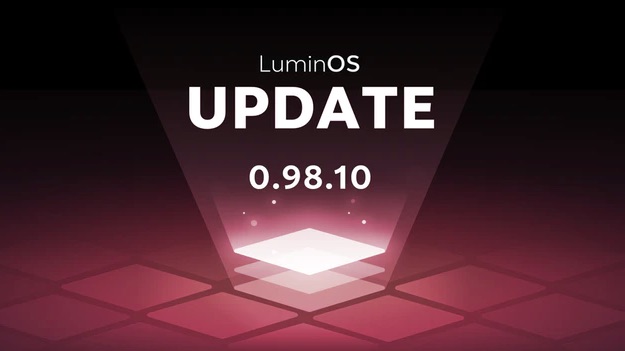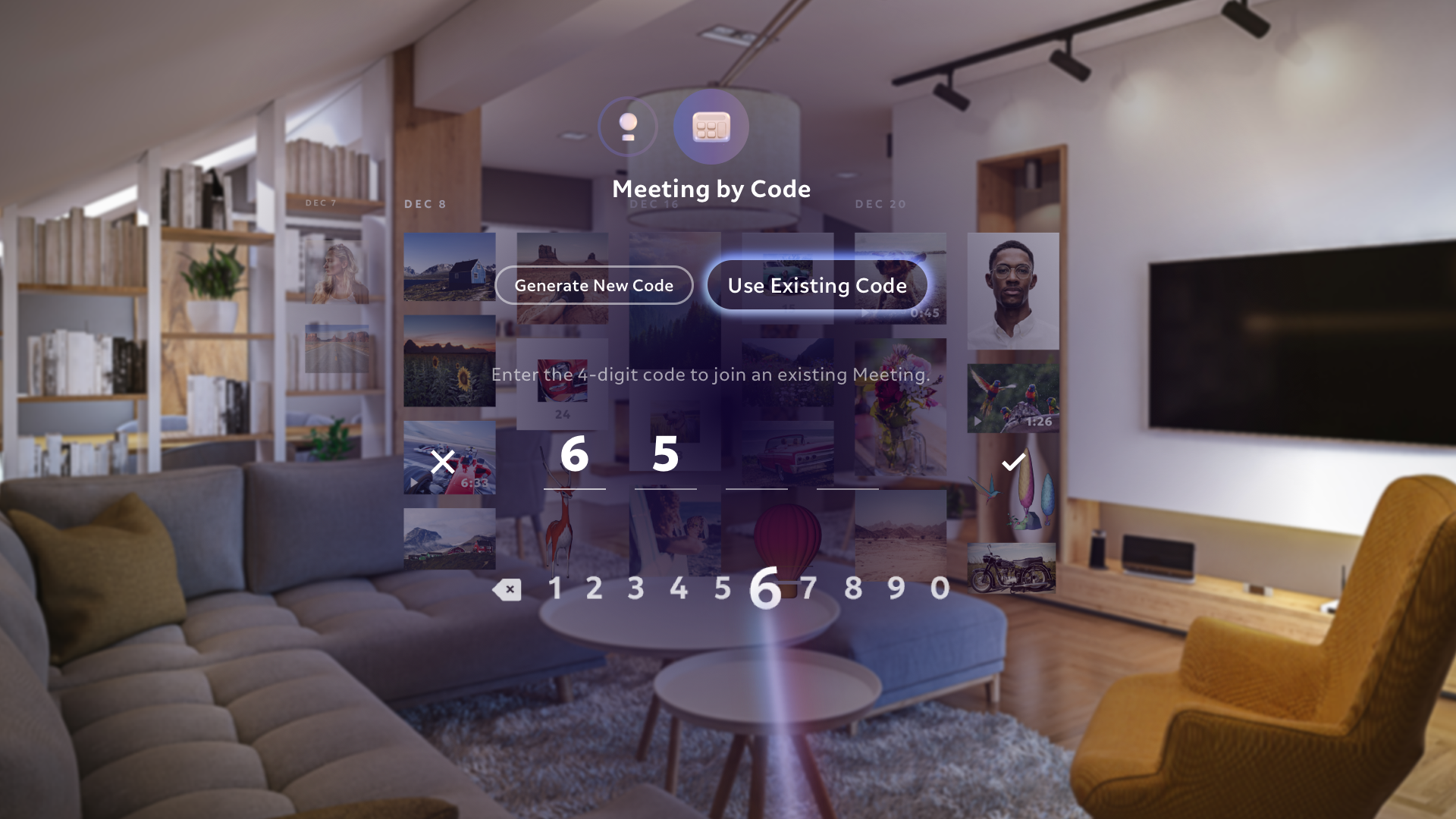
March 17, 2020 – Magic Leap has today announced the release of Lumin OS 0.98.10, the latest version of the company’s spatial computing operating system. The latest software update provides users with various new on-device features that enhance the 3D visualization workflow, enterprise device management, multi-user functionality, voice and gesture control. The company has also announced that it is releasing Lumin SDK 0.24.
Furthermore, the company is launching its app store, Magic Leap World, on the web. Customers who purchased the Professional Developer package will receive early access to the Lumin OS 0.98.10 update. The release is also available for direct download on Magic Leap’s Developer Portal. Over-the-air updates for Lumin OS 0.98.10 start rolling out on March 16th and will continue through the remainder of the week.
As part of the announcement, and In conjunction with the company’s partners at NTT DoCoMo, Magic Leap will be enabling apps to be published by developers based in Japan, to users located in Japan, and in Japanese (but platform-level text such as titles and descriptions will still be in English as the company works on platform-level support for Japanese).
Desktop Companion App

As part of the release of Lumin SDK 0.24, Magic Leap will be enabling more developer features to promote the creation of apps that start to bring the advantages of spatial computing into communications apps. The company has also stated that it is leveraging those same features to deploy its own applications to enhance the way that enterprises do business.
The Desktop Companion App (DCA) is one such application, and is a new tool that allows 3D designers and modelers to share what they have created on a 2D screen to a Magic Leap device. With DCA, users can now see their work spatially, improving the speed to transfer 3D files onto Magic Leap 1 and streamlining the design and review process. For example, users designing a car or an architectural model on a PC will be able to push it to a Magic Leap 1 device, and will be able to see the car in front of them in seconds, as well as share it with a coworker or a client. The Desktop Companion App can be downloaded here.
https://youtu.be/Bmc5M2OoUNg
At its core, DCA is a secure bridge between a user’s PC (Windows or Mac) and Magic Leap 1 or Magic Leap One Creator Edition. With DCA, a user can manage files, access file info, utilize scriptable file plugins with 3rd party apps such as Maya, and view device status. This marks the first direct connection between PC and Magic Leap hardware for enterprise users, and enables people using 3D design software to quickly push content to devices. Once on a device, users can review it in 3D, walk around the object, annotate it, and capture screenshots to reference back on a computer. All of this can be done independently, as well as collaboratively on an object in real-time with another person wearing Magic Leap 1, either located in the same room or remotely.
Meetings & new multi-user functionalities
Magic Leap is now evolving its Avatar Chat and Casting features toward an enterprise-ready collaboration platform – ‘Meetings’. This update, which is being released as a beta version, allows users to chat, share, and collaborate on 2D and 3D content with both local and remote users. Beta collaboration features are also being introduced to the Gallery app that allow users to draw and comment on 3D .glb models in Meetings (.glb files can be imported and updated seamlessly through the Desktop Companion App). Furthermore, Magic Leap’s ‘Outfit’ app allows users to personalize their avatars for use in Meetings.

Magic Leap is also introducing features that make it easier to collaborate with coworkers through multi-user experiences. Previously, to join a multi-user experience, users needed to invite someone via Invitations. This user experience wasn’t always conducive to quickly joining multi-user experiences, so devices now support “Meeting by Code,” where users are able to easily enter a 4-digit code to join an experience.
Other new enterprise features
Alongside DCA, Magic Leap has added some new admin functionalities to Device Manager, its software that gives organizations the support and tools they need to use and manage their Magic Leap devices, apps, and identities. These functionalities include the ability to sideload apps without a network connection, as well as the ability to turn off features such as automatic downloads of over-the-air software updates.
Enterprise IT admins can also define spatial mapping settings for their employees, including the ability to enable (or disable) Shared World for their enterprise users. Shared World is the Magic Leap system that allows for persistent digital content over time and merges real world spatial mapping data collected across multiple sessions and multiple devices. With this functionality, admins have greater control of the way their organization’s Magic Leap devices share data. More information about spatial mapping can be found here.
Magic Leap World interface updates
With this release, Magic Leap is laying the foundation for the future of Magic Leap World by releasing a version of Magic Leap World on the web, as well as updating the Magic Leap World interface on device.
Historically, we’ve only been able to learn about Magic Leap apps by putting on a device or checking out some of the apps that the company shares on its website and blogs. However, Magic Leap states that as its catalog has grown, it wants everyone to understand how the Magic Leap ecosystem is evolving with different types of content being released almost daily. At the same time, the company wants developers to more readily be able to share their creations with those who may not yet have a device, so now anyone who is interested can view the entire catalog of Magic Leap apps from any device with a browser.
The company has also revamped the design of Magic Leap World on device. Previously, Magic Leap World was on-demand and resembled app stores seen on screens. The company states that on the web, it is introducing new ways to visualize how an app will look in a user’s space. On device, it is evolving beyond the container of a single app and into richly-informed, layered experiences. Magic Leap states that: “On both web and Magic Leap 1, Magic Leap World will continue to evolve from that traditional app store to the future of app discovery and commerce using spatial computing.”
Additional feature updates
Lumin OS 0.98.10 will introduce an all-new apps layout on the device that allows users to see more apps at once (up to 21), as well as to filter apps by category, such as Screens and Concepts. Notifications are also now ephemeral so they’ll disappear after being displayed.
New features for the Helio browser are also being introduced that allow users to lay Helio pages flat on a table or floor, making it more intuitive to view content such as maps. Additional streaming support means that users will be able to stream more on-demand content via Helio, including Amazon Prime Video, Disney+, and AT&T TV Now.
Additionally, users can now stream to Twitch simply by saying, “Hey Lumin, stream to Twitch.” Magic Leap has also added an experimental setting to allow users to interact with the in-device interface by using their hands to open and move apps or select UI buttons.
Furthermore, Magic Leap has redesigned how users can set up their spatial map settings. Spatial maps are a critical part of the Magic Leap ecosystem and help the platform enable interactions between digital content and physical surroundings. The device sensors continuously scan an environment, process the information, and use it to create 3D representations of an area. These spatial maps include different levels of detail, and users can now choose whether to store certain levels of detail on device or in a cloud-based storage options offered by Magic Leap. Storing select features in the cloud may enable users to participate in multi-user collaborative experiences and in cross-platform experiences on iOS or Android devices. In some situations, it may also allow the device to recognize where a user is more quickly and accurately, according to the company.
Looking forward
Historically, Magic Leap has been releasing large OS and SDK updates every 2-3 months, with each release carrying several hundreds of requirements, bug fixes, and architectural changes. Moving forward, Magic Leap states that we can expect its release cycles to be dictated more by the needs of its customers. The company plans to accompany these updates with insights into how its partners are leveraging the newest features.
Magic Leap added that some of the major areas it is working on and may release in the coming months include updates to the Magicverse (SDK as well as other enterprise features), object recognition, and major developments for on-premise support among others. The company states that these business-driven releases will accelerate the next phase of its go-to-market as it supports more customers and partners around the world.
Image/video credit: Magic Leap/YouTube
About the author
Sam is the Founder and Managing Editor of Auganix. With a background in research and report writing, he has been covering XR industry news for the past seven years.
